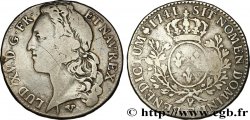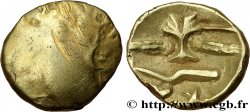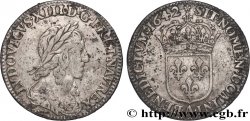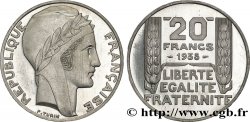Live auction - bry_421270 - LOUIS XV "THE WELL-BELOVED" Pièce de plaisir ou médaille au type de l’écu dit "au bandeau" en or 1740 Paris
Чтобы принять участие в торгах, вы должны войти в систему и стать подтвержденным участником аукциона. Войдите, чтобы сделать ставку. Ваш аккаунт будет подтвержден в течение 48 часов. Не ждите до закрытия торгов, чтобы зарегистрироваться.Сделав ставку на данный товар, вы вступаете в юридическое соглашение на покупку выбранного товара и нажатием кнопки «Сделать ставку» подтверждаете принятие вами условий интернет-аукционов cgb.fr.
Ставка может бить сделана только в полном эквиваленте евро. Торги закроются согласно времени, указанному в описании товара, все ставки, сделанные после закрытия торгов, учитываться не будут. Не следует откладывать предложение вашей ставки до последнего момента, так как система может не успеть обработать вашу заявку, и ваша ставка не будет принята. Более детальную информацию вы найдёте здесь: FAQ по интернет-аукционам.
Все ставки победителей подлежат комиссии 18%.
Все ставки победителей подлежат комиссии 18%.
| Оценить : | 130 000 € |
| Цена : | Нет ставки |
| Максимальная предлагаемая цена : | Нет ставки |
| Конец торгов : | 14 March 2017 15:45:34 |
Тип Pièce de plaisir ou médaille au type de l’écu dit "au bandeau" en or
Дата: 1740
Монетный двор / Город: Paris
Металл: gold
Проба: 917 ‰
Диаметр: 42 mm
Ориентация осей монеты: 12 h.
Вес: 49,51 g.
Век: lisse
Редкость: R3
Комментарии о состоянии
Cette médaille est frappée sur un flan large et régulier. Infime petit coup sur la tranche à 12 heures aussi bien au droit qu’au revers et d’infimes éraflures sur le listel à 1 heure au droit. Exemplaire présentant de très hauts reliefs, sans trace de circulation, mais avec des hair lines superficielles suite à un ancien nettoyage
Ссылки в каталоге: :
Лицевая сторона
Аверс: легенда: LUD. XV. D. G. FR. - ET NAV. REX..
Аверс: описание: Tête de Louis XV à gauche, ceinte d'un bandeau ; JCR sur la tranche du coup.
Аверс: перевод: (Louis XV, par la grâce de Dieu, roi de France et de Navarre).
Обратная сторона
Реверс: легенда: .SIT NOMEN DOMINI - A - BENEDICTUM (MG) 1740.
Реверс: Описание: Écu de France ovale, couronné entre deux branches d'olivier ; au-dessous lettre d'atelier.
Реверс: перевод: (Béni soit le nom du Seigneur).
Комментарий
Pièce de couverture. Comme les “pièces de dix et huit louis” de Louis XIII, il s’agit d’une pièce de plaisir ou médaille en or frappée afin d’inaugurer une nouvelle série monétaire. Le droit et le revers reprennent le type de l’écu dit “au bandeau” de Louis XV, toutefois cette médaille fut frappée avec des carrés spéciaux présentant des listels et non pas des grènetis extérieurs. De plus la tranche est lisse, l’axe est en frappe médaille (12 heures) et le renard du directeur de la Monnaie de Paris, Mathieu Renard de Petiton est absent, tandis que la rose de Georges Röettiers est bien présente avant le millésime et mieux traitée sur les écus au bandeau d’argent de la Monnaie de Paris. Le poinçon de buste a été réalisé par Joseph Charles Roëttiers (1693-1779) ayant laissé sa signature JCR sur la tranche du cou du roi. Cette pièce de plaisir ou médaille d’exception fut certainement frappée à la Monnaie des médailles, installée dans le Louvre, frappant ordinairement les médailles et jetons pour le roi. En plus de cet exemplaire nous en avons recensé cinq autres passés dans différentes ventes, tous issus des mêmes carrés de droit et de revers :
1 - BnF, Cabinet des médailles, ancienne collection Carlo de Beistegui, acquisition en 1944, http://gallica.bnf.fr/ark:/12148/btv1b85831387 ;
2 - Vente Jean Vinchon de Monte-Carlo du 30 juin 1978, n° 305 ;
3 - Vente Heritage de Dallas du 18 avril 2013, n° 23828 ;
4 - Vente Palombo de Genève n° 16, 21 novembre 2015, n° 284 (138441 euros plus frais) ;
5 - Vente Jean Vinchon du 29 octobre 2002, n° 34 repassé dans la vente Palombo de Genève n° 15, du 22 octobre 2016, n° 636 (101684 euros plus frais). Cette nouvelle effigie apparue durant le premier semestre de 1740. Parmi les espèces courantes, pour l’écu dit “au bandeau”, les premiers poinçons et matrices arrivèrent dans les ateliers de province au mois de mai 1740. Ceux destinés à la Monnaie de Reims furent postés de Paris le 5 mai 1740 et y arrivèrent le 13 mai 1740 (AD Marne, 27B38). Ceux de Lyon y arrivèrent le 9 mai 1740 (AD Rhône, 6B22) et ceux de Rennes le 14 mai 1740 (AD Ille-et-Vilaine, 6B66). Le 17 août 1740, le graveur de la Monnaie de Lyon reçut "un modèle de carrés en bois pour servir au graveur pour faire forger et dresser ses carrés de teste d'escus suivant l'instruction quy est attachée" (AD Rhône, 6B22). Certains ateliers ne changèrent que tardivement l'effigie du roi. Ainsi ce n'est que le 8 août 1741, que le graveur particulier de la Monnaie de Tours les reçut des juges-gardes (AD Indre-et-Loire, B 115) ; pour la Monnaie de Lyon, il faudra attendre le 6 septembre 1741, pour que le graveur particulier remette quatre carrés aux juges-gardes "deux testes et deux pille pour escus de converssion de la nouvelle esffigie" (AD Rhône, 6B22). Le graveur général expédia ensuite, à partir de juillet 1740, les poinçons destinés aux louis d’or dit “au bandeau”. L’écu dit “au bandeau” fut la première dénomination a adopté cette nouvelle effigie. Si des exemplaires soignés ont été frappés en argent, cette frappe de médaille en or fut très certainement exécutée pour le roi et distribuée à son entourage le plus proche.
1 - BnF, Cabinet des médailles, ancienne collection Carlo de Beistegui, acquisition en 1944, http://gallica.bnf.fr/ark:/12148/btv1b85831387 ;
2 - Vente Jean Vinchon de Monte-Carlo du 30 juin 1978, n° 305 ;
3 - Vente Heritage de Dallas du 18 avril 2013, n° 23828 ;
4 - Vente Palombo de Genève n° 16, 21 novembre 2015, n° 284 (138441 euros plus frais) ;
5 - Vente Jean Vinchon du 29 octobre 2002, n° 34 repassé dans la vente Palombo de Genève n° 15, du 22 octobre 2016, n° 636 (101684 euros plus frais). Cette nouvelle effigie apparue durant le premier semestre de 1740. Parmi les espèces courantes, pour l’écu dit “au bandeau”, les premiers poinçons et matrices arrivèrent dans les ateliers de province au mois de mai 1740. Ceux destinés à la Monnaie de Reims furent postés de Paris le 5 mai 1740 et y arrivèrent le 13 mai 1740 (AD Marne, 27B38). Ceux de Lyon y arrivèrent le 9 mai 1740 (AD Rhône, 6B22) et ceux de Rennes le 14 mai 1740 (AD Ille-et-Vilaine, 6B66). Le 17 août 1740, le graveur de la Monnaie de Lyon reçut "un modèle de carrés en bois pour servir au graveur pour faire forger et dresser ses carrés de teste d'escus suivant l'instruction quy est attachée" (AD Rhône, 6B22). Certains ateliers ne changèrent que tardivement l'effigie du roi. Ainsi ce n'est que le 8 août 1741, que le graveur particulier de la Monnaie de Tours les reçut des juges-gardes (AD Indre-et-Loire, B 115) ; pour la Monnaie de Lyon, il faudra attendre le 6 septembre 1741, pour que le graveur particulier remette quatre carrés aux juges-gardes "deux testes et deux pille pour escus de converssion de la nouvelle esffigie" (AD Rhône, 6B22). Le graveur général expédia ensuite, à partir de juillet 1740, les poinçons destinés aux louis d’or dit “au bandeau”. L’écu dit “au bandeau” fut la première dénomination a adopté cette nouvelle effigie. Si des exemplaires soignés ont été frappés en argent, cette frappe de médaille en or fut très certainement exécutée pour le roi et distribuée à son entourage le plus proche.







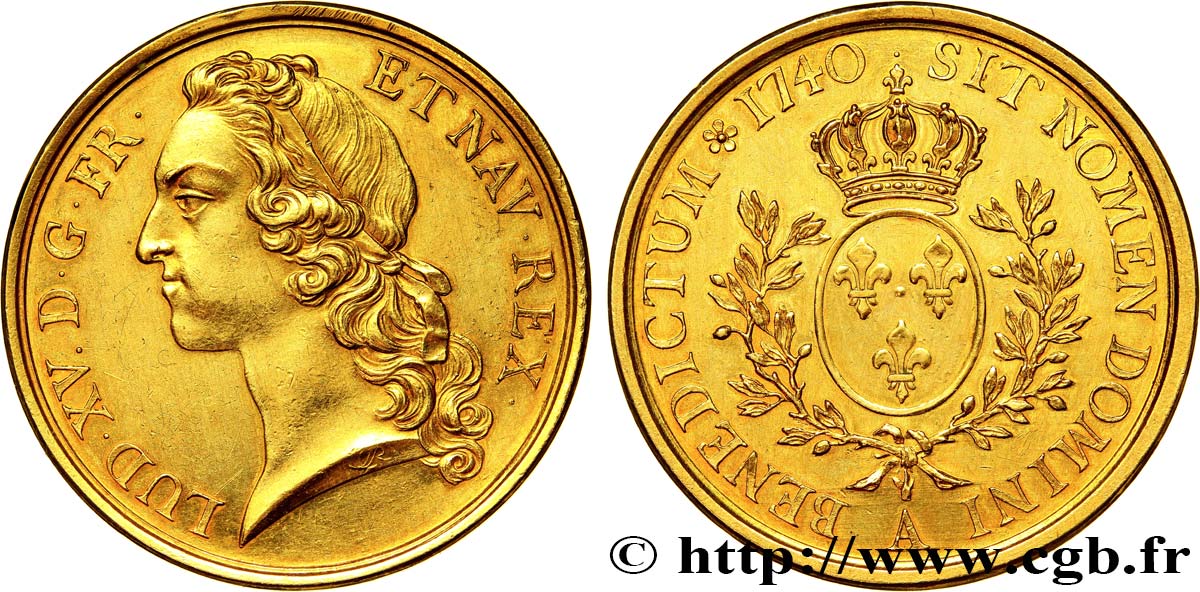
 Cообщить об ошибке
Cообщить об ошибке Распечатать страницу
Распечатать страницу Отправить мой выбор
Отправить мой выбор Задать вопрос
Задать вопрос Consign / sell
Consign / sell
 Информация
Информация

